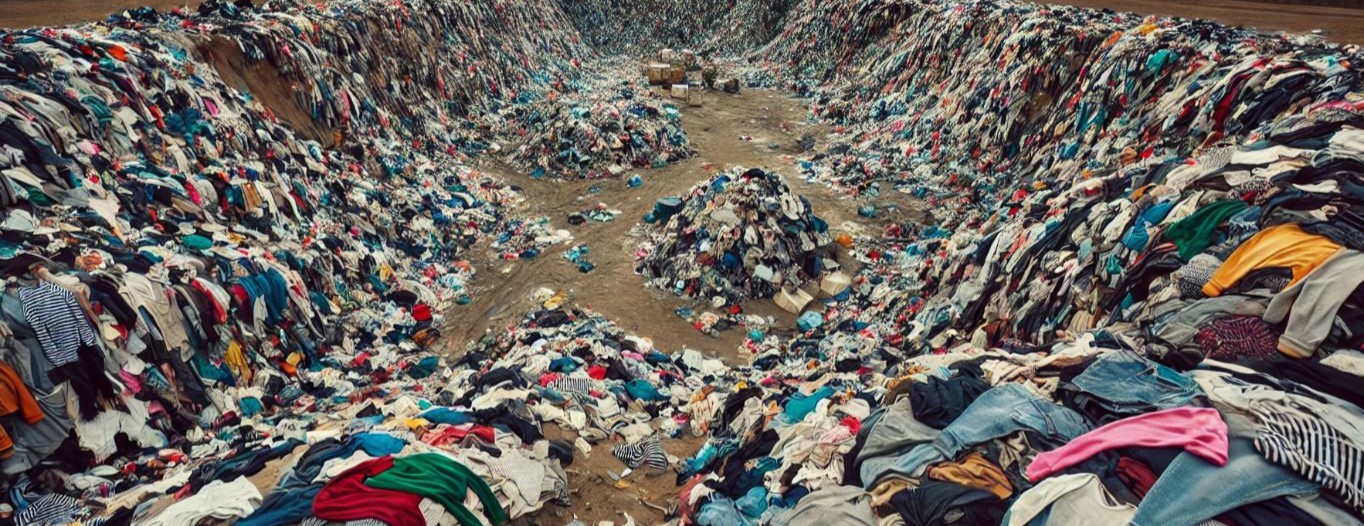
What Happens When You Don’t Donate: The Dark Side of Textile Waste
The fashion industry is often seen as a way for people to express their individuality, creativity, and culture. But there’s an unseen cost that comes with every new shirt, pair of jeans, or dress you buy—and that cost is textile waste. Every year, millions of tons of clothing are discarded, piling up in landfills, contributing to environmental degradation, and creating problems that extend far beyond what we might imagine when we simply toss out that old sweater.
The reality is, what happens when we don’t donate our unwanted clothes is a growing environmental crisis that affects everyone. In this piece, we’ll explore the dark side of textile waste, provide shocking statistics about how much clothing ends up in landfills, and discuss how you can minimize your impact by making regular donations.
The Shocking Scope of Textile Waste
Let’s start with the numbers. Globally, about 92 million tons of textile waste is produced every year. In the U.S. alone, it’s estimated that about 85% of all discarded textiles end up in landfills, despite the fact that nearly all of them could be reused, recycled, or repurposed in some way. That’s over 11 million tons of textile waste in the U.S. alone – every year.
For some perspective, that’s like throwing away the weight of about 70,000 Boeing 747 airplanes full of clothes annually. If you laid out those clothes end-to-end, they would circle the Earth multiple times.

And it’s not just landfills that are overwhelmed by textile waste. A significant portion of clothing, particularly items made from synthetic materials like polyester, gets incinerated, releasing toxic chemicals and greenhouse gases into the air. These chemicals and emissions contribute to climate change, air pollution, and a variety of health issues for communities near these incineration sites.
How Long Clothes Linger in Landfills
One of the most devastating aspects of textile waste is how long it takes for fabrics to decompose. Cotton, for example, might seem like a natural fiber that would break down quickly, but in a landfill, it can take over 5 months to decompose. And that’s on the lower end of the spectrum.
Synthetic fibers, such as polyester and nylon, are even worse. These materials are essentially forms of plastic, and they can take up to 200 years to decompose. While they slowly break down, they release microplastics and toxic chemicals into the soil and water systems, which can harm wildlife and pollute drinking water sources.
The Environmental Impact of Fast Fashion
The rise of fast fashion – the rapid production of cheap, trendy clothing – has exacerbated the textile waste problem. Fast fashion encourages consumers to buy more clothes at lower prices, but these garments are often made from low-quality materials that wear out quickly. As a result, people are more likely to discard these items after just a few wears. It’s estimated that the average American throws away around 81 pounds of clothes each year, with much of this waste coming from fast fashion.

The environmental toll of this constant consumption is staggering. The fashion industry is responsible for about 10% of global carbon emissions – more than all international flights and maritime shipping combined. Additionally, it’s the second-largest consumer of the world’s water supply, using vast amounts of water to produce clothing. For instance, it takes about 2,700 liters of water to make just one cotton t-shirt. That’s enough water for one person to drink for 2.5 years.
What Happens When You Don’t Donate
When we choose to discard clothes instead of donating or recycling them, the consequences are far-reaching. Not only do our clothes contribute to overflowing landfills, but they also waste the resources used to make them in the first place. The water, energy, and labor that went into producing those garments are effectively wasted when the items are thrown away prematurely.
Moreover, textile waste doesn’t just harm the environment – it also represents a missed opportunity to help others. Many people, both in the U.S. and abroad, lack access to adequate clothing. By donating clothes instead of tossing them out, you’re giving someone else the chance to benefit from items you no longer need. Whether it’s providing warmth for a homeless individual or helping someone in a developing country, donating clothes can have a significant impact.
How You Can Make a Difference: Actionable Steps
The good news is that reducing your impact on textile waste doesn’t have to be complicated. Here are some easy, actionable steps you can take to ensure that your old clothes don’t end up in a landfill:
- Start Donating Regularly
The easiest and most effective way to combat textile waste is to donate your gently-used clothes. Many people think of donation as something to do during spring cleaning, but making it a regular habit can have a much larger impact. Consider doing a wardrobe check every season, pulling out items you no longer wear, and setting them aside for donation. You’ll feel lighter, and your clothes can go to someone who really needs them.
Local donation centers, thrift stores, shelters, and even national organizations like Goodwill and The Salvation Army are always in need of quality clothing. Many organizations also offer free pick-up services, making it easier than ever to donate without leaving home.
- Organize a Clothing Swap
If you have friends, family, or coworkers who are also interested in reducing their textile waste, organizing a clothing swap can be a fun and sustainable way to give clothes a second life. Instead of buying new outfits, participants can trade items they no longer wear, keeping clothing in circulation and reducing the demand for new garments. It’s a win-win!
- Repurpose and Upcycle
Not all clothes are in good enough condition to donate, but that doesn’t mean they have to end up in the trash. Get creative and find ways to repurpose old clothes into something new. For example, you can turn tattered t-shirts into cleaning rags, old jeans into tote bags, or a worn-out sweater into a cozy cushion cover. Upcycling keeps textiles out of landfills while allowing you to reduce waste and create something unique.
- Recycle When Possible
If your clothes are beyond repair or not suitable for donation, look for textile recycling programs in your area. Many cities and organizations now offer textile recycling services where you can drop off old clothes, which will then be turned into insulation, carpet padding, or even new fabrics. Brands like H&M and Levi’s also have take-back programs that allow you to return old clothes for recycling.
- Buy Less, Choose Better
Reducing textile waste starts with mindful consumption. Rather than constantly buying new clothes, focus on building a timeless, versatile wardrobe that prioritizes quality over quantity. Invest in pieces that are durable, well-made, and designed to last. Avoid the temptation of fast fashion and opt for brands that are transparent about their sustainability efforts and ethical practices.
Making Donation a Habit
One of the most effective ways to ensure your clothes don’t contribute to textile waste is to build the habit of donating. Instead of waiting until you have a massive pile of clothes to go through, make it part of your routine. For example, you could set a reminder every few months to evaluate your wardrobe and gather items to donate. Keep a donation box or bag in your closet, and whenever you come across something you no longer wear, place it inside.
By making donation a regular part of your life, you’ll not only help reduce textile waste, but you’ll also support others in need and create a more organized, manageable wardrobe for yourself.
Final Thoughts
The dark side of textile waste is a serious issue, but it’s one we all have the power to address. By choosing not to donate, we contribute to a cycle of waste that harms the environment, depletes natural resources, and perpetuates a culture of overconsumption. However, with small, intentional changes, we can make a big impact.
Donating clothes regularly, repurposing old items, and recycling textiles are all ways to combat the environmental and social consequences of textile waste. Every piece of clothing you donate is one less item in a landfill and one more resource for someone in need. By embracing these actions, we can all help reduce the waste and environmental burden caused by discarded textiles.

Kelly P
Kelly is your go-to guide for all things community-focused and eco-friendly. With a fun, conversational style, she loves breaking down big ideas into easy, relatable tips. Whether she’s talking about donating clothes, reducing waste, or giving back to the community, Kelly’s all about making a positive impact while keeping things light and engaging. She’s all about action and loves inspiring others to roll up their sleeves and make a difference!

Kelly P
Kelly is your go-to guide for all things community-focused and eco-friendly. With a fun, conversational style, she loves breaking down big ideas into easy, relatable tips. Whether she’s talking about donating clothes, reducing waste, or giving back to the community, Kelly’s all about making a positive impact while keeping things light and engaging. She’s all about action and loves inspiring others to roll up their sleeves and make a difference!






